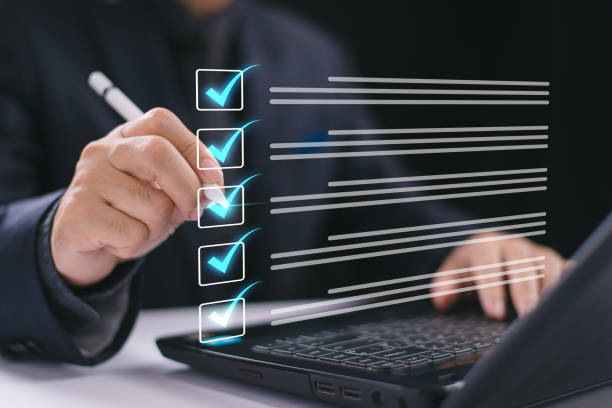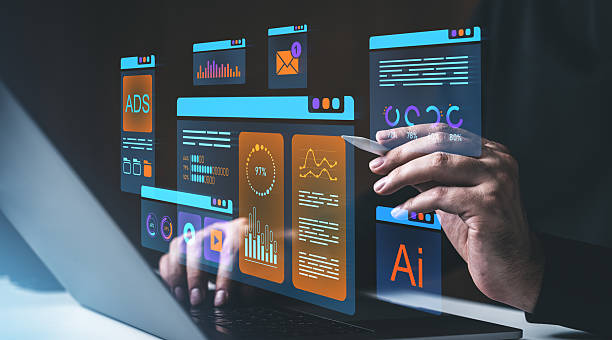What is On-Page SEO and Why is it Important?

#On_Page_SEO (On-Page SEO) is a set of techniques and actions performed within your website to improve its ranking in Google search results and other search engines.
SEO is not limited to keywords, but also includes optimizing site structure, content, tags, and other internal site elements.
The importance of On-Page SEO lies in helping search engines better understand your site’s content and recognize its value for users.
A site with strong On-Page SEO has a greater chance of achieving high rankings in search results and attracting organic traffic.
In other words, On-Page SEO makes your site more visible and helps you attract more customers.
For example, if you operate in the home appliance sales sector, On-Page SEO helps you rank on the first page of Google for related searches, such as “buy refrigerator” or “best washing machine”.
On-Page SEO also improves user experience, as optimized sites usually load faster, have a better structure, and provide useful and relevant content.
Improving user experience can, in turn, help increase site rankings in search results.
On-Page SEO is a long-term investment that can bring significant results for your business.
Performing proper and up-to-date #On_Page_SEO helps you surpass your competitors and have a stronger presence in the online market.
On-Page SEO Checklist
Does your current website convert visitors into customers or drive them away? Solve this problem forever with professional corporate website design by Rasawob!
✅ Build strong credibility and branding
✅ Attract target customers and increase sales
⚡ Get a free consultation now!
Keyword Research 🔑 The First Step in On-Page SEO
![]()
Keyword research is one of the most important steps in On-Page SEO.
Keywords are phrases that users search for in search engines to find information, products, or services they are looking for.
Choosing appropriate and relevant keywords for your business helps you optimize your site’s content and achieve higher rankings in search results related to those keywords.
The first step in keyword research is identifying the main topics of your business.
For example, if you are involved in English language education, your main topics could include “English grammar lessons”, “improving English listening skills”, and “English conversation training”.
After identifying the main topics, you need to find keywords related to these topics.
You can use various tools such as Ahrefs, Moz Keyword Explorer, Google Keyword Planner, and Ubersuggest to find relevant keywords.
These tools provide you with information such as search volume, competition level, and related keywords.
For example, using these tools, you might find that the keyword “online English language learning” has a high search volume, and related keywords like “best English learning website” and “English learning app” are also popular among users.
After collecting keywords, you should prioritize them based on criteria such as search volume, competition level, and relevance to your business.
It is better to initially focus on keywords with moderate search volume and low competition, as it is easier to rank for these keywords.
Also, make sure that the selected keywords are relevant to your site’s content and address users’ needs.
Do not forget that keyword research is an ongoing process, and you should regularly review and add new keywords to your list.
By conducting accurate and systematic keyword research, you can optimize your site’s content and achieve higher rankings in search results related to your business.
Optimizing Title Tags and Meta Descriptions 🏷️

Title Tags and Meta Descriptions are among the most important HTML elements in On-Page SEO.
Title tags are texts that appear at the top of the browser window and in search results.
Meta descriptions are summaries of the page’s content that appear below the title in search results.
Optimizing title tags and meta descriptions helps search engines better understand your page’s content and encourages users to click on your site’s link.
Each page’s title should be unique, engaging, and relevant to the page’s content.
It is best for the page title to include the main keyword of the page and be between 50 to 60 characters long.
For example, if your page is about “best On-Page SEO methods”, the page title could be “Best On-Page SEO Methods 💥 Comprehensive Guide”.
The meta description should also be an engaging and informative summary of the page’s content and encourage users to click on your site’s link.
It is best for the meta description to include the main keyword of the page and be between 150 to 160 characters long.
For example, if your page is about “best On-Page SEO methods”, the meta description could be “In this comprehensive guide, learn the best On-Page SEO methods and increase your site’s ranking on Google.”
Yoast provides various tools to help you optimize title tags and meta descriptions.
For instance, the Yoast SEO plugin for WordPress allows you to easily edit title tags and meta descriptions for each page and preview them in search results.
Optimizing title tags and meta descriptions is a simple but important process that can significantly impact your site’s ranking in search results.
By optimizing these elements, you can increase your site’s organic traffic and attract more customers.
In On-Page SEO, titles and meta descriptions are very important.
On-Page SEO is not just about writing articles; you must have good titles and meta descriptions.
| Element | Description | Best Practices |
|---|---|---|
| Title (Title Tag) | The text displayed at the top of the browser and in search results. | Unique, engaging, relevant, includes the main keyword, length between 50-60 characters. |
| Meta Description | A summary of the page content displayed below the title in search results. | Engaging, informative, relevant, includes the main keyword, length between 150-160 characters. |
Content Optimization for On-Page SEO 📝

Content is king! This famous phrase in the world of SEO highlights the immense importance of content for a website’s success.
High-quality, engaging, and relevant content that meets user needs is one of the most crucial factors in On-Page SEO.
Search engines like Google look for websites that provide valuable and useful content to users.
Therefore, if you want to improve your site’s ranking in search results, you must focus on producing high-quality content.
The first step in optimizing content for SEO is to understand your target audience.
You need to know what information your audience is looking for and what questions they have.
By understanding your audience, you can create content that addresses their needs and encourages them to stay on your site longer.
After understanding your audience, you need to identify keywords related to your topic and use them in your content.
However, be aware that excessive use of keywords (Keyword Stuffing) can negatively impact your site’s ranking.
Therefore, try to use keywords naturally and in the appropriate context within your content.
In addition to keywords, you should also pay attention to content structure.
Your content should be logically organized, using headings, subheadings, paragraphs, and lists to segment the content.
Using images, videos, and infographics can also help make your content more engaging.
HubSpot Another important factor in content optimization is its freshness and up-to-dateness.
Search engines give higher scores to sites that regularly publish new content.
Therefore, try to consistently produce new content and update your old content.
High-quality and optimized content not only helps improve your site’s ranking in search results but also increases site traffic, conversion rates, and user experience.
So, On-Page SEO is better achieved with good content.
On-Page SEO
Does your company’s website create a professional and lasting first impression in the minds of potential customers? Rasawob, with its professional corporate website design, not only represents your brand’s credibility but also opens a path for your business growth.
✅ Create a powerful and reliable brand image
✅ Attract target customers and increase sales
⚡ Get free consultation
Image Optimization 🖼️
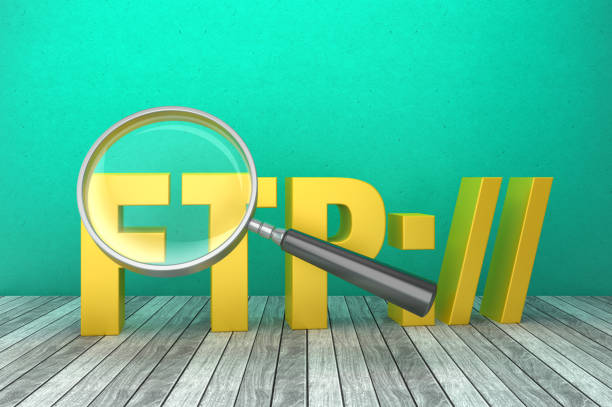
Images play an important role in the attractiveness and user experience of a website.
However, unoptimized images can slow down site loading speed and negatively impact On-Page SEO.
Image optimization means reducing image file size without compromising quality and using appropriate alt tags.
The first step in image optimization is choosing the right format for images.
JPEG format is suitable for images with many colors, such as photos, while PNG format is suitable for images with fewer colors and text.
The WEBP format is also a new format developed by Google, which has a smaller file size compared to JPEG and PNG.
After choosing the appropriate format, you need to reduce the image file size.
You can use various tools such as TinyPNG, ImageOptim, and Compressor.io to reduce image file size.
These tools reduce the image file size without compromising quality.
In addition to reducing file size, you should use appropriate alt tags for your images.
An alt tag is text that is displayed if the image fails to load, and it helps search engines understand the image content.
The alt tag should be descriptive, relevant to the image content, and include the main keyword of the page.
For example, if you have an image of a wooden table on a product page, the alt tag could be “High-quality handmade wooden table”.
Moz Another important tip for image optimization is to use appropriate file names for your images.
The image file name should be descriptive, relevant to the image content, and include the main keyword of the page.
For example, if you have an image of a wooden table, the image file name could be “handmade-wooden-table.jpg”.
Image optimization is a simple but important process that can significantly impact site loading speed and On-Page SEO.
By optimizing images, you can improve user experience and increase your site’s ranking in search results.
URL Structure Optimization 🔗

URL structure is an important factor in On-Page SEO that helps search engines better understand your site’s structure and correctly index your site’s pages.
URLs should be short, descriptive, relevant to the page content, and include the main keyword of the page.
URLs should not include special characters, numbers, or uppercase letters.
It is best for URLs to use English keywords and hyphens (-) to separate words.
For example, if your page is about “On-Page SEO training”, the page URL could be “example.com/on-page-seo-training”.
Also, you should pay attention to the overall URL structure of your site.
URLs should be logically organized and reflect your site’s structure.
For example, if your site is an online store, product page URLs should include the product category and product name.
Ahrefs Using a proper URL structure helps search engines better understand your site’s pages and helps users easily navigate your site.
Additionally, optimized URLs can help improve your site’s ranking in search results.
Therefore, URL structure optimization is one of the most important steps in On-Page SEO.
To improve your site’s On-Page SEO, you should pay special attention to the URL structure.
The Importance of Internal Linking 🔗

Internal Linking means creating links between different pages of your site.
Internal linking helps search engines better understand your site’s structure and identify important pages on your site.
Internal linking also helps users easily navigate your site and find the information they are looking for.
For internal linking, you should use appropriate Anchor Text.
The anchor text should be descriptive, relevant to the destination page’s content, and include the main keyword of the destination page.
Avoid linking to irrelevant pages or using generic anchor texts like “click here”.
Also, you should pay attention to the number of internal links on each page.
Excessive linking to other pages can reduce the page’s authority.
It is best to link to pages that are relevant to the current page’s content and provide valuable information to users.
Yoast Internal linking is a powerful strategy in On-Page SEO that can help improve your site’s ranking in search results.
With proper internal linking, you can introduce important pages of your site to search engines and increase your site’s traffic.
In On-Page SEO, internal links are very important.
On-Page SEO
| Feature | Description | Important Notes |
|---|---|---|
| Anchor Text | The text displayed as a link. | Descriptive, relevant, includes the main keyword of the destination page, avoid generic texts. |
| Number of Links | The number of internal links on each page. | Avoid excessive linking, link to relevant and valuable pages. |
Site Loading Speed and Its Impact on On-Page SEO ⚡
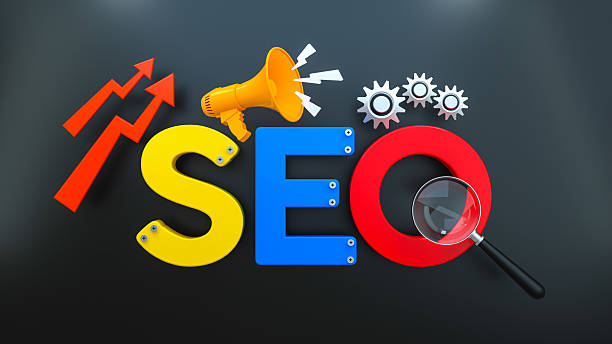
Site loading speed is an important factor in user experience and On-Page SEO.
Users who experience slow site loading are likely to abandon the site.
Search engines also give higher scores to sites with high loading speeds.
To increase site loading speed, you can use various methods.
Image optimization, using a CDN (Content Delivery Network), enabling caching, reducing the size of CSS and JavaScript files, and choosing quality hosting are among the effective methods for increasing site loading speed.
PageSpeed Insights Google offers various tools to measure site loading speed and provide suggestions for improvement.
Google PageSpeed Insights and GTmetrix are among the popular tools in this area.
By using these tools, you can identify site loading speed issues and take action to resolve them.
Increasing site loading speed not only helps improve your site’s ranking in search results but also increases site traffic, reduces bounce rate, and improves user experience.
So, pay attention to On-Page SEO and site speed.
On-Page SEO
Is your company’s website as professional and trustworthy as it should be? With specialized corporate website design by Rasawob, create an online presence that reflects your credibility and attracts more customers.
✅ Build a powerful and professional image for your brand
✅ Convert visitors into real customers
⚡ Get a free consultation now!
Mobile-Friendly Website 📱
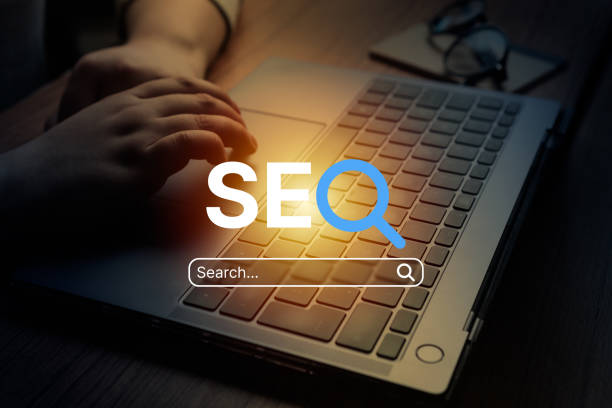
Given the increasing use of mobile phones for internet searches, having a Mobile-Friendly website is a critical factor in On-Page SEO.
Mobile-Friendly means that your site displays correctly on various devices such as mobile phones and tablets, and users can easily interact with your site.
Google gives higher scores to Mobile-Friendly sites and displays them higher in search results.
To ensure your site is Mobile-Friendly, you can use Google’s Mobile-Friendly Test tool.
This tool shows you whether your site is Mobile-Friendly or not and what issues it has.
Mobile-First Indexing Using responsive design, optimizing images for various devices, using readable and accessible fonts, and avoiding the use of Flash are among the effective methods for making a site Mobile-Friendly.
Being Mobile-Friendly not only helps improve your site’s ranking in search results but also increases site traffic, improves user experience, and increases conversion rates.
To perform On-Page SEO and boost your site, you should pay special attention to this point.
On-Page SEO
Continuous Review and Update of On-Page SEO 🔄
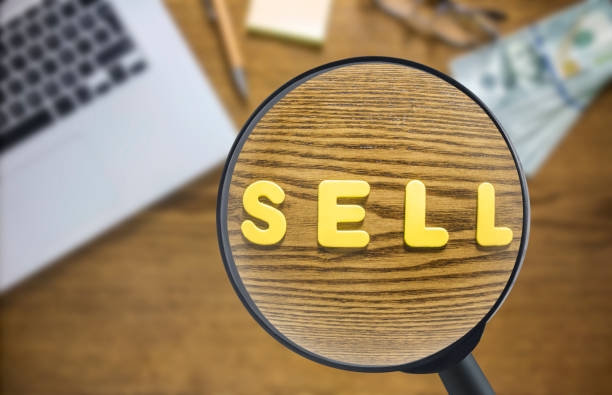
On-Page SEO is an ongoing process and requires continuous review and updates.
Search engine algorithms are constantly changing, and SEO techniques that are effective today might not be effective tomorrow.
Therefore, you should regularly review your site’s On-Page SEO and stay informed about the latest changes in search engine algorithms.
Regularly checking keyword performance, site ranking in search results, site traffic, site loading speed, and mobile-friendliness are among the actions you should take.
Moz By reviewing these points, you can identify your site’s On-Page SEO issues and take action to resolve them.
Updating site content, optimizing images, improving URL structure, and internal linking are among the actions you can take to improve your site’s On-Page SEO.
Continuous review and update of On-Page SEO help you maintain your site’s ranking in search results and increase your site’s traffic.
On-Page SEO
Frequently Asked Questions
| No. | Question | Answer |
|---|---|---|
| 1 | What is On-Page SEO? | On-Page SEO refers to a set of actions performed within a website to optimize its pages and achieve a better ranking in search results. |
| 2 | What is the most important factor in On-Page SEO? | High-quality, relevant, and comprehensive content that meets user needs is the most important factor in On-Page SEO. |
| 3 | What role does the Title Tag play in On-Page SEO? | The title tag is one of the most important factors that tells search engines and users what the page content is about. It should include the main keyword and be engaging. |
| 4 | How important is the Meta Description tag? | Although it doesn’t directly impact rankings, it is very effective for the Click-Through Rate (CTR) in search results and encourages users to visit the page. |
| 5 | How is image optimization performed in On-Page SEO? | By using appropriate alt tags, compressing image size to increase loading speed, and meaningful image file naming. |
| 6 | What is the importance of using headings (H1, H2, H3) in On-Page SEO? | Headings help structure content, increase readability, and assist search engines in understanding the hierarchy and sub-topics of the content. |
| 7 | What does Internal Linking mean and what are its benefits? | Internal linking means creating links between different pages of a website. This helps distribute authority, improve user navigation, and assist search engine crawling. |
| 8 | Where should the Focus Keyword be placed on the page? | The main keyword should be placed in the title tag, meta description, H1, first paragraph, naturally throughout the text, and if possible, in the URL. |
| 9 | What impact does duplicate content have on On-Page SEO? | Duplicate content can harm a site’s ranking and confuse search engines as to which version is original, potentially being flagged as spam. |
| 10 | How important is page loading speed in On-Page SEO? | Page loading speed is an important ranking factor and directly impacts user experience. Slow pages lead to increased user bounce rates. |
And other services of Rasawob Advertising Agency in the field of advertising
- Smart SEO: Revolutionize customer behavior analysis with precise audience targeting.
- Smart Customer Journey Map: Professional optimization for customer acquisition using key page optimization.
- Smart Digital Advertising: Transform digital branding with SEO-driven content strategy.
- Smart Marketplace: Revolutionize click-through rates with custom programming.
- Smart Sales Automation: An innovative platform to improve click-through rates with key page optimization.
And over hundreds of other services in the field of internet advertising, advertising consultation, and organizational solutions
Internet Advertising | Advertising Strategy | Advertorials
Resources
Comprehensive On-Page SEO Guide
What is On-Page SEO?
On-Page SEO Tutorial
On-Page SEO Techniques
? Are you looking for growth and visibility for your business in the digital world? Rasawob Afarin Digital Marketing Agency, relying on up-to-date knowledge and extensive experience in user-friendly website design and implementing effective online marketing strategies, is always ready to assist you on the path to achieving great success.
📍 Tehran, Mirdamad Street, next to Bank Markazi, Southern Kazeroon Alley, Ramin Alley, No. 6

